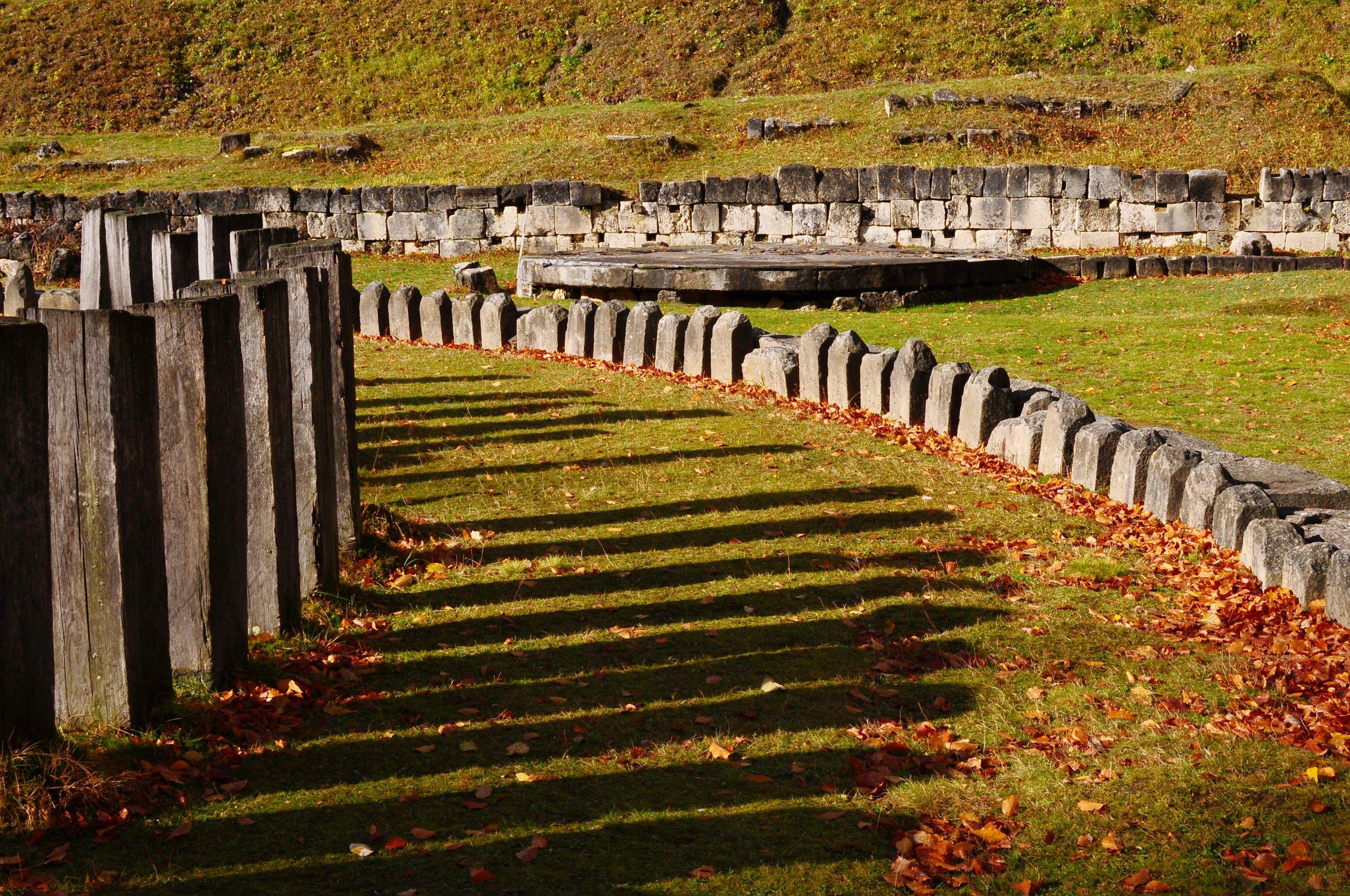RESTORE
We work with care and a well defined purpose.
Preventive archaeological researches are carried out on the site of Sarmizegetusa Regia in order to obtain additional information regarding:
- the state of preservation of some wall segments;
- their construction features;
- and various terrain improvements made back in antiquity and in the the present.
We work in eight clear stages separately.
The beginning of the 19th century:
the first mentions and entries about the wall
1803-1910
descriptions, plans and sketches of the wall
1924
first archaeological research of the walls
1950
extensive research begins
1960-1966
the walls are uncovered along their entire length
1980
the restoration project is being executed and massive interventions are performed on the ashlar sides and the emplecton
1987-1990
excavations are undertaken inside the fortification, they brought new information on the construction phases (in a first phase, the Dacian fortification included only the I, II, III terraces and subsequently, after the Roman conquest, it was extended to its current shape and size)
2002-2003
collapsed blocks are reassambled
2018
DALI is made for the entire monument

Find out with us 7 of the characteristics of the ancient wall:
HOW WE WORK: Trenches and areas were opened at various points along the line of the fortification. In addition to obtaining data related to the preservation state and to construction aspects, the layout of the excavation units offers the opportunity to obtain new information regarding the different stages of construction, reconstruction and extension of the fortification (the controversy in the literature concerning the chronology of these phases is well known).
UPDATE: Excavations executed so far
The first archaeological researches in the project were carried out on the line of the fortification wall, between June 21st and September 7th, 2021. On this occasion we opened at this stage two areas (one at the east gate and the other at the south gate) and four trenches (three of them positioned in the northern part of the fortification, one in the southern part). We found out important pieces of information about:
- The ancient dimensions of the two gates, - The structure of the wall in different places, - Documentation of an older phase,
- Access roads related to the fortification,
- Characteristics of the landscaping works undertaken in antiquity for erecting walls.
At the same time, we documented the modern and contemporary interventions that made their mark on the fortification.











